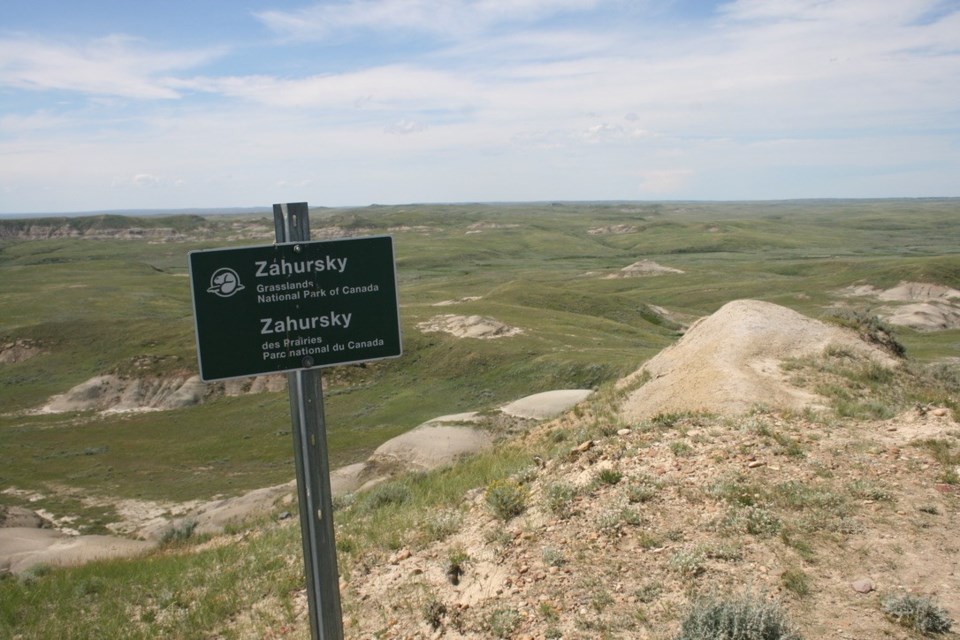The east bloc of Grasslands National Park remains one of the untouched places on the Prairies.
The sprawling combination of bald Prairie, hills and badlands were ranch pasture before the park was established some 40 years ago but few signs of human occupation on the land remain.
Travelling south from Moose Jaw, visitors to the park see an unusual display of hills that bely the common “Saskatchewan is all flat” theory.
The park headquarters are located at the former McGowan Ranch in a broad valley.
Eleven years ago on my first visit, the ranch house and a few outbuildings were left with a plank to cross the creek. No park staff.
Since then, the ranch house became park headquarters, the outbuildings are gone, a campground has been built as well as some rustic cabins.
Two Indigenous teepees are available for campers but one park employee noted people think its creepy at night to hear mice scrambling around and coyotes howling.
Part of the enchantment of this wilderness park is the Killdeer badlands south of the headquarters. These badlands run south of the U.S. border and form part of the Outlaw Trail through the badlands all the way to Mexico.
In 1874 the first dinosaur fossil ever found in Western Canada was uncovered in the Killdeer badlands.
Until a few years ago, visitors wanting to see the badlands had to walk into them, or take a road south and get a glimpse from a short Prairie trail.
The last Stephen Harper federal budget provided a bundle of money to the long underfunded national parks system. After consultation with locals, the park built a paved road meandering through grasslands and along parts of the badlands.
The road offers visitors a good view of the natural spectacle with parking lots in several places allowing a walk to the edge of the coulee for a better look at the awesome natural features.
Driving to the park gates takes about 2.5 hours from Moose Jaw on Highway Two South, Highway 13 west from Assiniboia, turning south at Limerick on Highway 358.
Ron Walter can be reached at [email protected]




